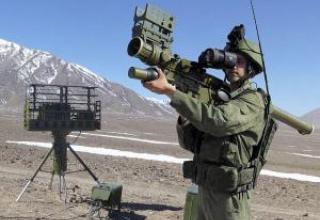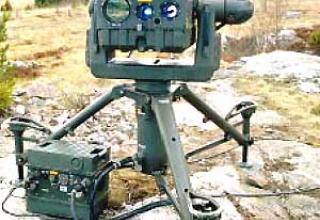Portable anti-aircraft missile system HongYing 6 (FeiNu-6, FN-6) is designed to provide direct cover for units of ground forces from aircraft, attack helicopters and cruise missiles that perform flights at low and extremely low altitudes. Target is fired on both the catch-up and counter courses.
FN-6 complex is in service with the People's Liberation Army of China (PLA).
FN-6 was developed at the Shanghai Academy of Spaceflight Technology (SAST). It was first introduced in 2000 and is currently being actively promoted for export by China National Precision Machinery Import & Export Corporation (CNPMIEC).
The FN-6 package was delivered to the Armed Forces of Malaysia in 2006-2009. As part of the contract, technical documentation, special equipment and test facilities were transferred for production up to 100 pieces per year. In addition to this contract, the FN-6 was supplied to Pakistan, Cambodia, Sudan and Peru.
An improved version of the complex was presented at the Zhuhai Air Show at the end of 2008. The FN-16 missile has an extended range of up to 6 km and is believed to be equipped with a dual-band, IR- and UV-range, socket-type CNS.
Composition:
The main element of the FN-6 man-portable air defence system is an anti-aircraft guided missile (SAM) located in a fibreglass transport and launch container (see photo). The SAM consists of a hull, infrared homing head (HID), electronic control equipment, fuse, fragmentation warhead, marching and dropping launch engines. The missile is designed according to the aerodynamic scheme of the "duck" and has four stabilizers in the tail and four rudder in the front, which provides it with high maneuverability, allowing it to hit a target that performs maneuvering with an overload of up to 4g with a probability of at least 0.7.
The infrared homing head (HID) with four cells is placed inside a pyramidal fairing. Such its form has advantage over usual spherical (typical for the previous models of man-portable air defense systems of Chinese manufacture), as essentially reduces frontal resistance. To achieve high sensitivity, deep cooling of the receiver is applied (the refrigerant tank is attached to the trigger from below). It is assumed that the CLO is capable of guiding the missile when the interference is active in the infrared range.
Man-portable air defense systems can be equipped with a telescope sight and identification equipment "in-situ". The sight and the requester are mounted in the head part of the complex.
As well as previous versions of man-portable air defence systems, this system can be installed on tracked vehicles, helicopters and ships. The ship version of the FN-6 complex has a stabilized remote-controlled launcher with four missiles.
Characteristics:
| Maximum range, km | 5.5 ( 6 for FN-16) |
| Minimum range, m: - when firing towards - as you shoot inhalation |
800 500 |
| Height of target hit, m: - maximum - minimum |
3800 15 |
| Maximum speed of targets to be hit, m/s: - when firing towards - when shooting inhalation |
300 360 |
| Probability of defeat | 0.7 |
| Weight of the complex, kg | 16 |
| The length of the rocket, mm | 1495 |
| The diameter of the rocket, mm | 71 |
| Starter weight, kg | 10.77 |
| Flight Speed, m/sec | 600 |
| Available overload | 18g |
Sources:
- Василин Н.Я., Гуринович А.Л. "Зенитные ракетные комплексы" .-Мн.: ООО "Попурри", 2002- 464с.
- Misia to purchase Chinese missiles /DAILY EXPRESS NEWS
- http://www.defence.pk/forums/chinese-defence/43240-photos-chinese-armed-forces-142.html












